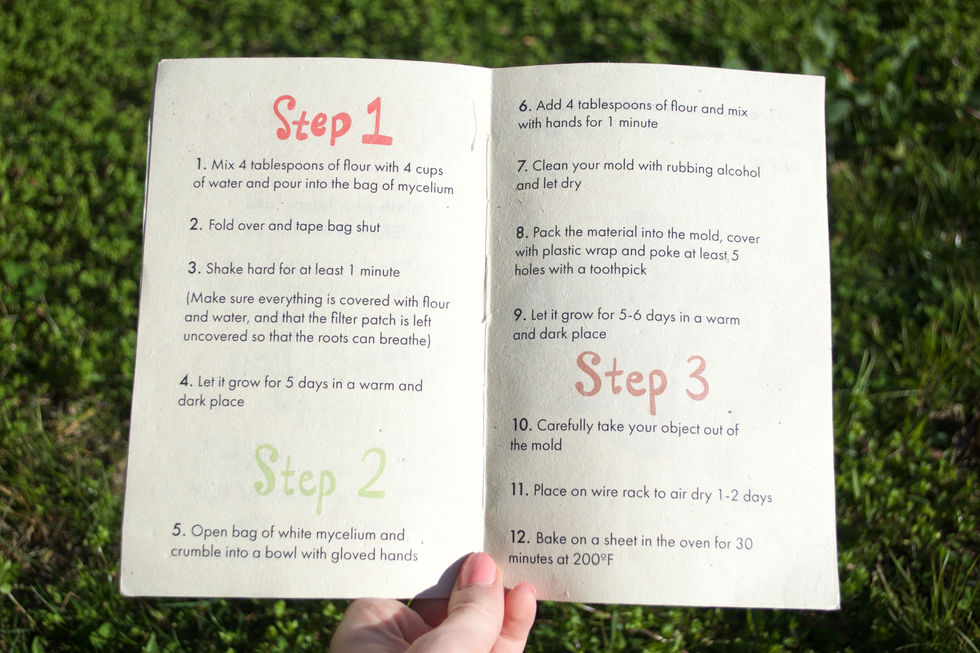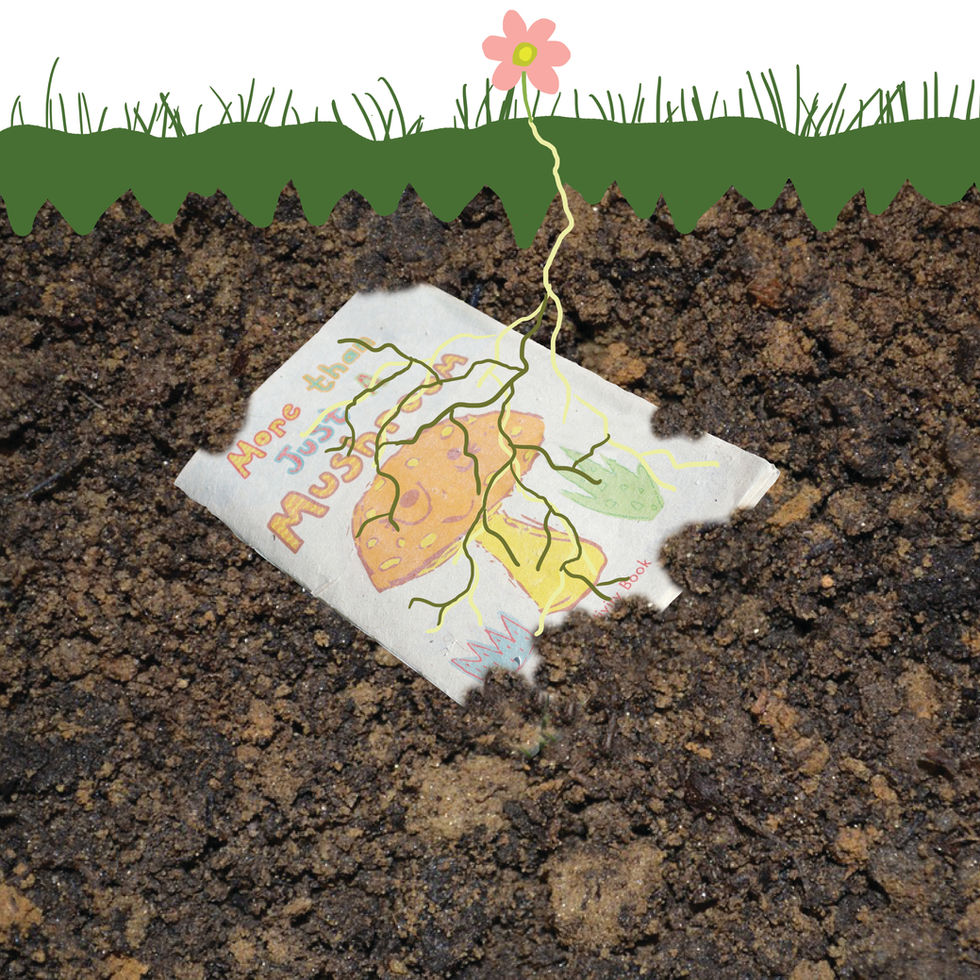Fantastic
Fungi Friends
For one of my main projects during my senior year
at Pratt Institute, I developed a brand strategy, package design, 3D renderings & book layout for an eco-minded children's activity based on mushroom mycelium as a plastic alternative.

Here is a prototype
of the packaging structure,
made with clay and cardboard.
Biodegradable
molds to shape
and grow the products
The big idea
Plastic waste buildup is an ever-growing problem for our oceans and environment. Most can take up to 500 years to decompose. Different approaches for combating this problem are gradually entering the mainstream, including an innovative approach that involves growing products from mycelium, the vegetative root-like part of a mushroom fungus.
In order to benefit the future of our planet, it is important to introduce younger generations to plastic alternatives and sustainable methods of production. Fantastic Fungi Friends is an activity kit for children that would allow them to experiment with growing objects from mycelium and get them excited about this compostable, plant-based, non-toxic material that could help save
our world.

The logo and main
pattern for the branding
are based off of the textures,
shapes and forms of fungi
and the leaves that they
consume in their environments.

Why this project?
I’ve always been very interested in innovative, eco-friendly alternatives to the products we use in daily life. During my junior year, I also took a class called Form & Design in Nature, which was greatly informing and inspiring the ideas for my upcoming thesis work. The course exposed me to biomimicry and all of the ways in which the natural world is constructed from simple components configured into increasingly complex patterns. These forms are often reflective of their function within specific environments and can be emulated in design, engineering and green technology. During the lesson about fungi, I came across an article explaining how mycelium can be used to grow plastic alternatives. I was completely blown away, and decided to make that the focus of my project, combined with my interest in children’s book writing and illustration.


The project has the following components:
-
Instructional, activity-based children’s booklet
-
Biodegradable molds
-
Bag of mushroom mycelium
-
Kit packaging with label design

The packaging
The activity kit would be packaged inside a hollow, organic ball grown from a non-toxic, completely compostable mycelium mixture. It wouldn't be heated, so it remains alive and may sprout certain species of edible mushrooms throughout its shelf life. Once the package is broken, three layers are revealed: 1 holds the activity book, 2 holds the pouch of mycellium, and 3 holds the molds.
The book
The activity-based instruction booklet is narrated by Sprout, the main character who is a small mushroom. Sprout explains the issue of plastic pollution and introduces kids to the idea of growing plastic alternatives from mushroom mycelium. Then the book guides kids step by step through the experiment process. Lastly, a series of activities including a drawing prompt, word unscramble, coloring page and sticker sheet engage children even further in the idea of mushrooms being super awesome!
The book is printed using vegetable-based ink on handmade paper embedded with seeds, so it can be planted to grow wildflowers after kids are done with
the activity.


Mycelium material
bag design

The impact
Over the last few decades, we have all become much more aware of the importance of being environmentally friendly. Today more than ever, it’s crucial for kids to recognize why making greener choices will help save the planet down the line. According to The Insight Family’s latest data, “the environment” ranks in the top 10 most concerning issues with kids across all age groups in the U.S.
Teaching children about eco-friendly alternatives, habits and lifestyles can:
-
encourage them to take pride in their communities
-
promote self-awareness and positive health choices for the rest of their lives
-
lead to increased altruistic behavior, empathy, and consideration towards others
-
make incredible progress in helping kids develop environmentally-friendly mindsets early on, thus creating
a greener future and a happier planet by educating the future generations that the Earth will belong to for years to come








